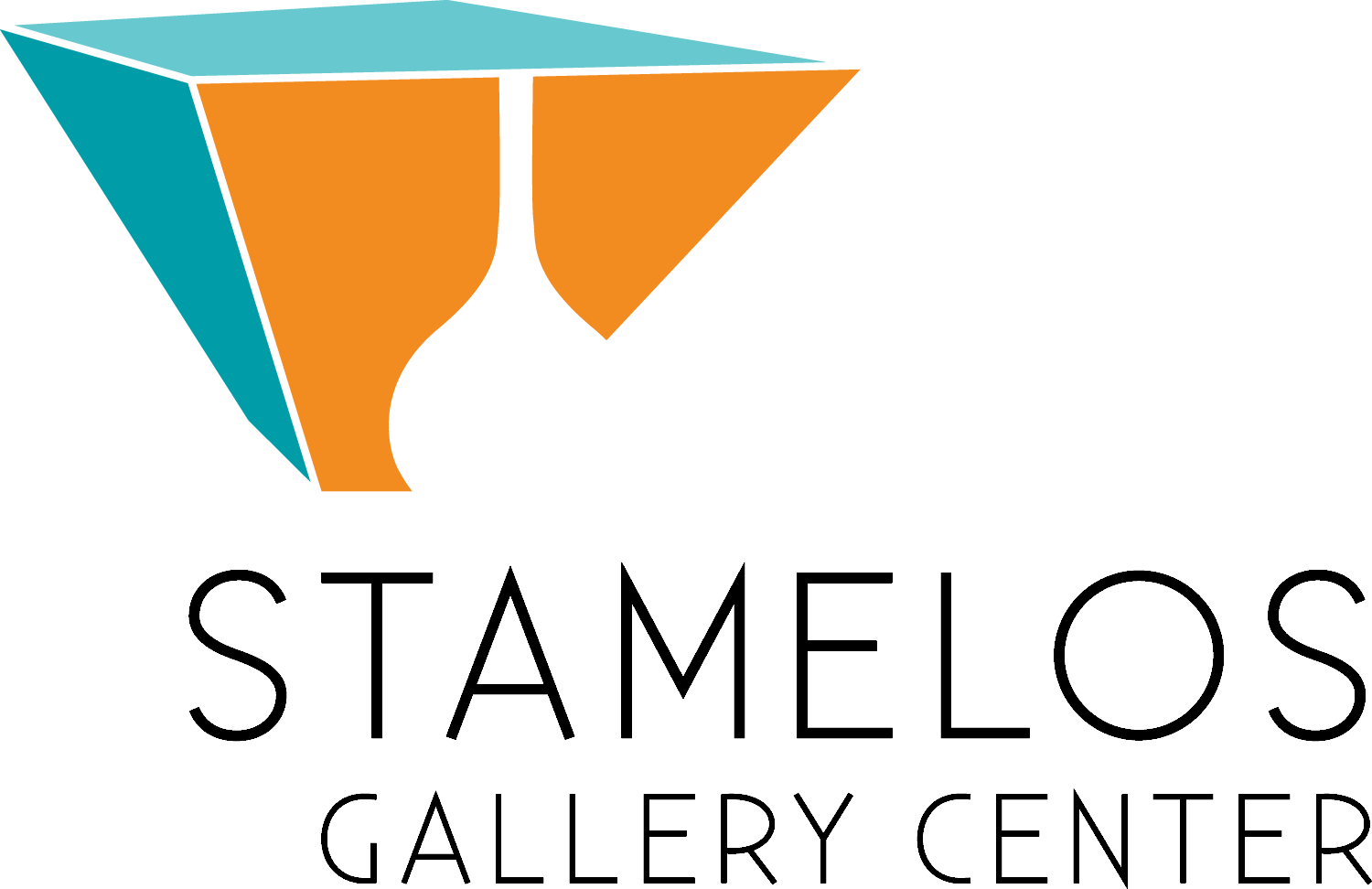
Laura Cavanagh: Perchance to Dream features two bodies of work; one consisting of imagined, collaged portraits of women who never existed. This collection of works is influenced heavily by portraiture from the Renaissance Era. The other collection consists of simple, imagined interior and exterior spaces inspired by the mid-20th century and personal memories.
Looking at these bodies of work, one might think they were created by the hands of two different artists, since, visually, they appear so strikingly dissimilar. However, Cavanagh has always been a curious person. As such, she has never stuck to just one "type" of artwork or worked in only one medium. She is constantly seeking out new materials to work with as well as ways to incorporate them. Cavanagh began her portrait series over a decade ago, when, at the time, they were merely pen and ink drawings. Those evolved into more elaborate drawings, which then progressed into even more intricate and ornate scenes incorporating fiber and paper elements.




Themes pertaining to the past and to memories are at the core of Cavanagh's work. She delights in watching old films and television shows, whose stage sets greatly inspire her interior and exterior scenes. True to this time in film and T.V. history is the prevalence of Technicolor. Cavanagh seeks to replicate this rich saturation in her work by using soft pastels that she blends endlessly with her fingertips. Not only does this technique create lush, vivid tones, but it also helps produce a sort of "glow" to the work; an effect the artist uses to harken back to the past, in much the same way a character in a film might enter a dream sequence.
Cavanagh omits figures from her pastel work to focus on the more technical artistic elements, such as color theory, light/shadow, and composition, as well as to allow viewers to place themselves in the work. She hopes that, in so doing, viewers will be able to draw on their own personal memories and experiences. Conversely, in her portrait series, figures are the predominant focus (as figures tend to be).
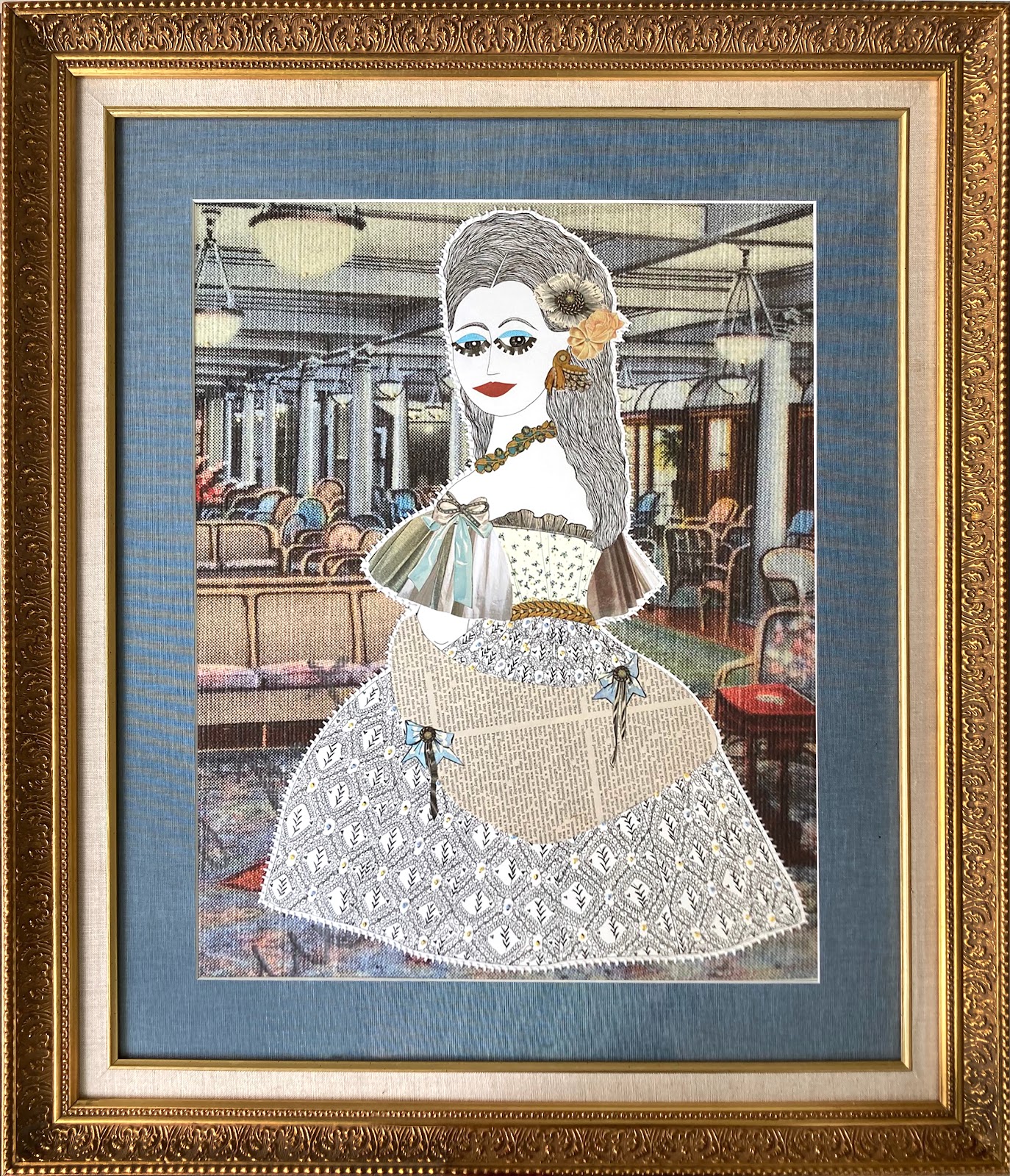
The tactile quality of the different mediums in which the artist works allows her to capture moments in time--both imagined and observed on screen--and make tangible that which is fleeting and transitory. The portrait series exemplifies Cavanagh’s innate whimsy. The characters are invented and take on identities of their own. The artist draws upon the art history courses she took in college, her time spent in museums, and her need to escape the doldrums of everyday life. Both bodies of work are vessels by which to escape the "real world," if only for the time Cavanagh spends creating them.
On display are 70 pieces created over the past five years. The two bodies of work demonstrate the development of Cavanagh's style; of different themes; and her natural curiosity and zeal for experimentation.
Through this exhibition, Laura Cavanagh: Perchance to Dream, the artist hopes to take viewers of all ages and demographics on a visual odyssey, either to a time in history that they can recall firsthand or to a time they can only imagine. As technology and now, Artificial Intelligence (AI), moves forward at an alarmingly fast, and at times terrifying pace, Cavanagh finds herself more and more drawn to these decades of yore when the world seemed just a bit less hurried and things were seemingly not advancing at such a breakneck speed. She hopes viewers of the show will appreciate this shared visual theme within her work as well.
Laura Cavanagh is a Michigan artist currently living in Metro-Detroit. She graduated summa cum laude from the University of Michigan in 2011 with a BFA in art and design and a minor in art history. When she is not creating art, you can find her taking long walks, hanging out with her cats, listening to an audiobook, or trying out a new NYT recipe (Melissa Clark's are her favorite). Cavanagh has a passion for living life fully and making people happy.
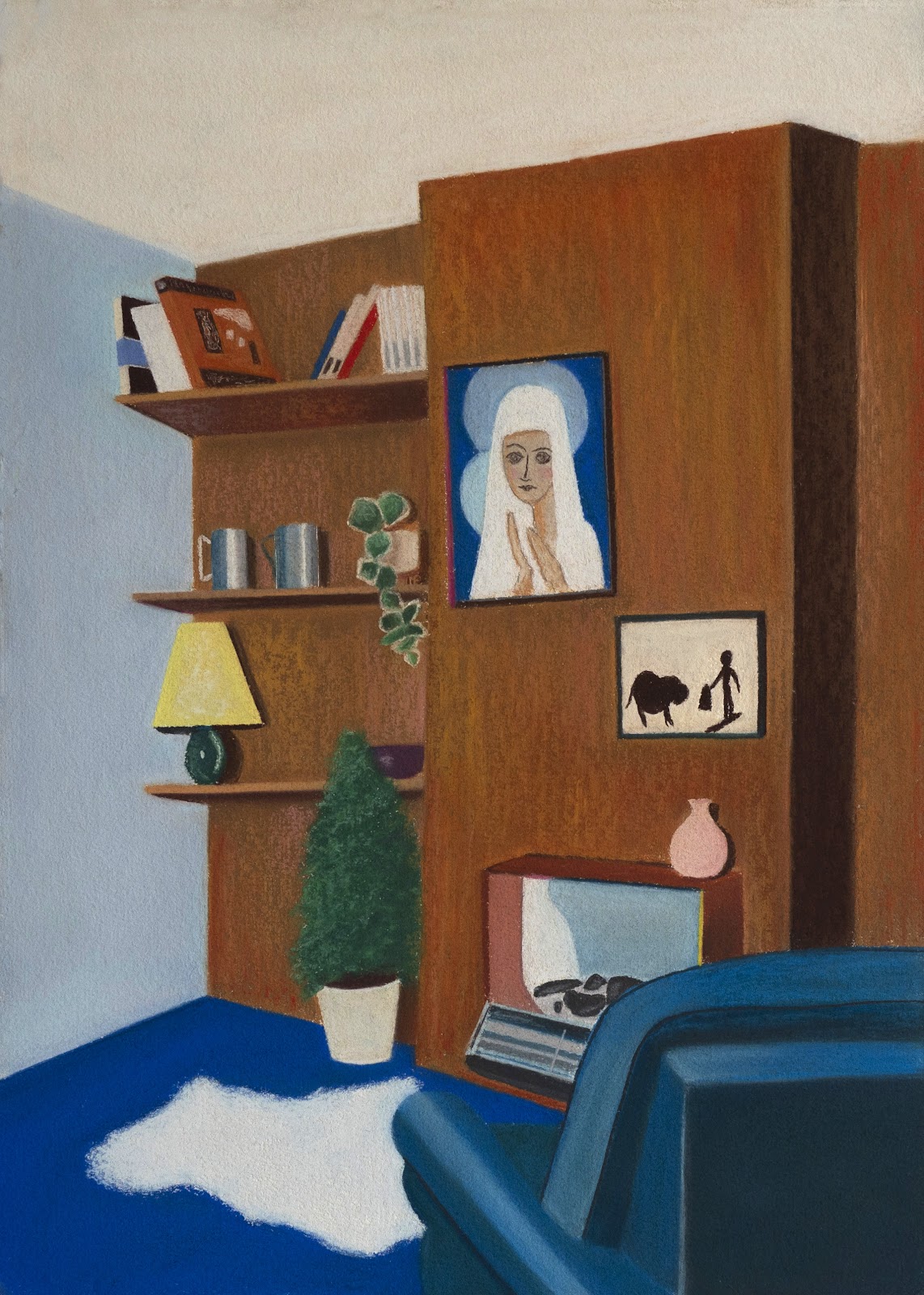
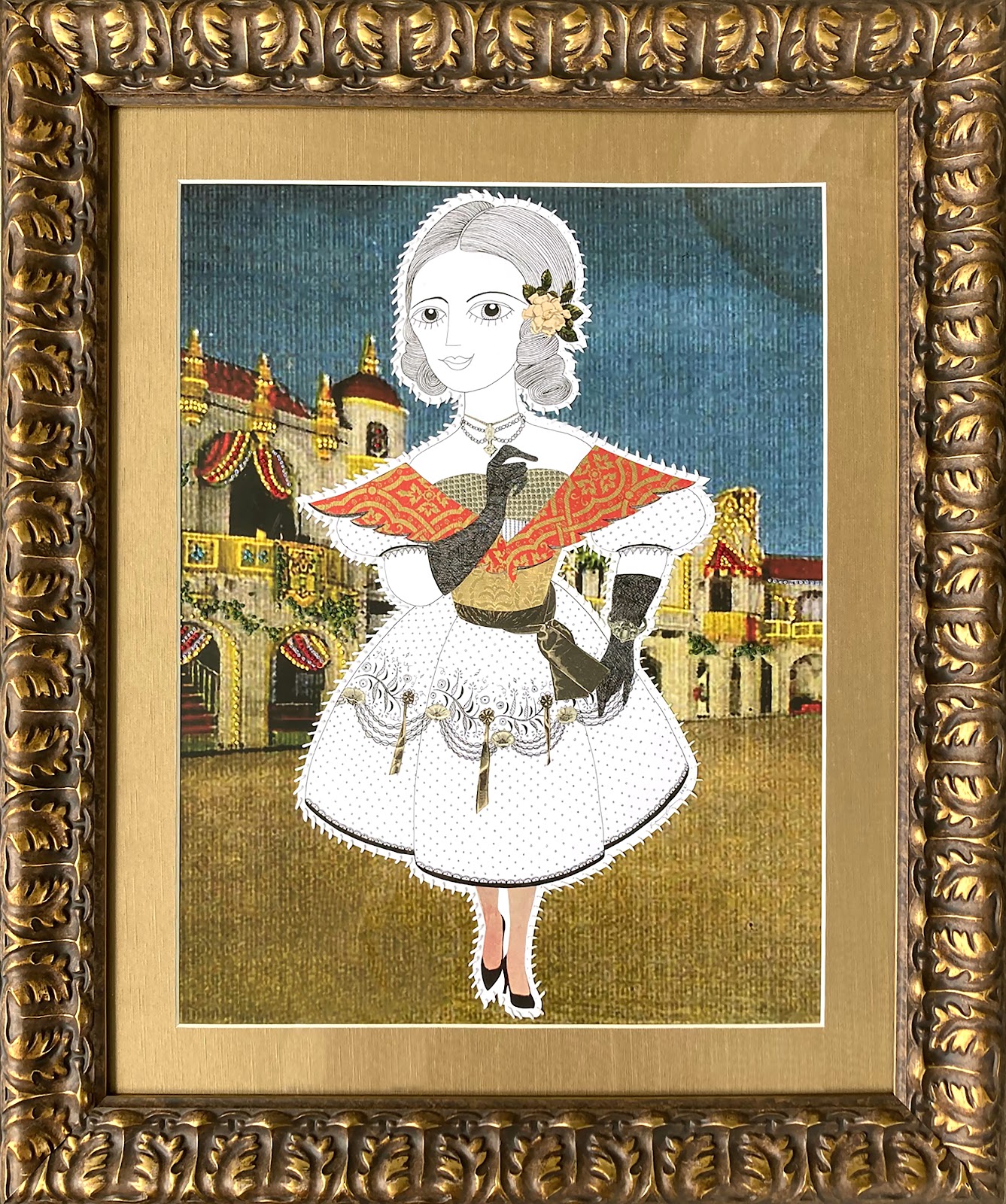
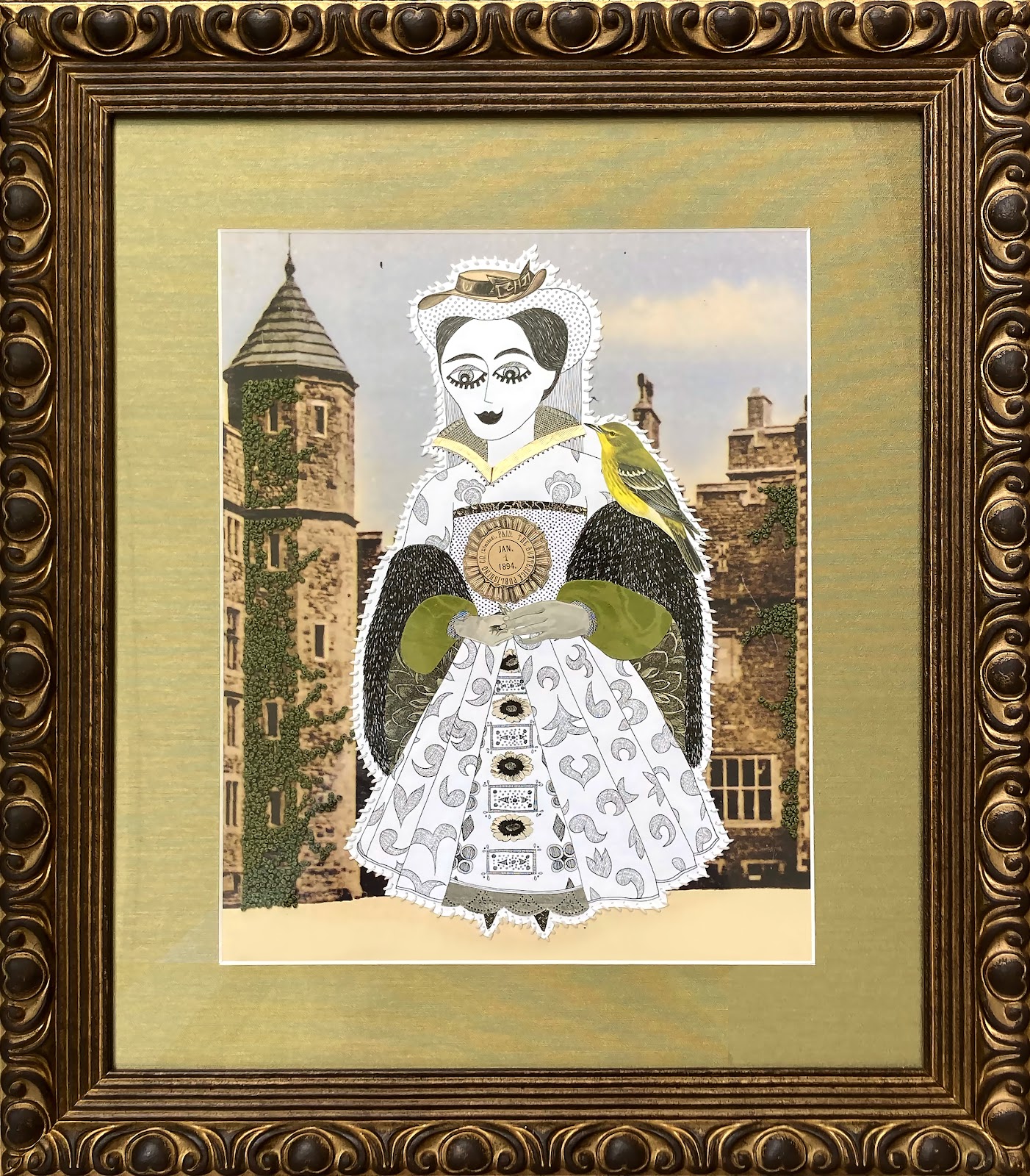
Opening Reception
Thursday, May 8, 2025, 5:00 p.m. - 7:00 p.m.
Artist talk at 6:00 p.m.
Reception is free to the public, free parking in UM-Dearborn lot.
Complimentary wine and hors d'oeuvres provided.
The Stamelos Gallery Center is located on the first floor of the Mardigian Library at the University of Michigan-Dearborn. For more information, see below for contact information. Anyone requiring accommodations under the provisions of the Americans with Disabilities Act should contact lacotton@umich.edu.
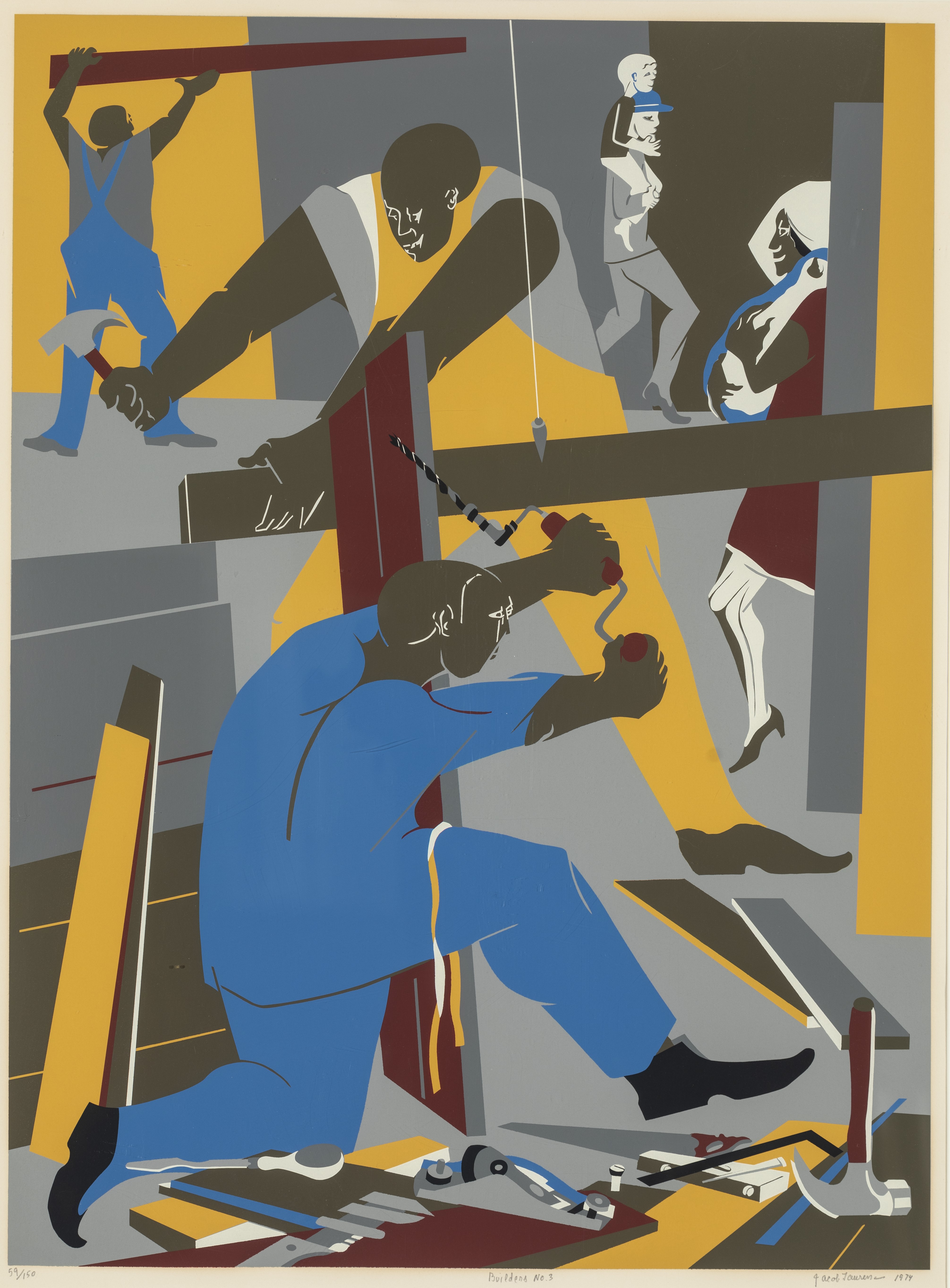
Jacob Lawrence (1917-2000), Serigraph print, 1974
Gift of Gilbert M. Frimet,
Collection of UM-Dearborn (1980.065)
Photographed by Tim Thayer
This powerful serigraph print from the permanent collection was created by Jacob Lawrence (1917-2000), one of this century's most widely acclaimed artists.
Lawrence was born in Atlantic City, New Jersey, but moved to Harlem, New York, at 13. He is among the few painters of his generation who grew up in a Black community, received instruction primarily from Black artists, and was influenced by the experiences of Black individuals.
Lawrence's artwork portrays the lives and struggles of the Black community, capturing their experiences through several series focused on figures such as Toussaint L'Ouverture, Frederick Douglass, and Harriet Tubman, as well as themes related to life in Harlem and the civil rights movement of the 1960s. His style is characterized by vibrant colors and abstract forms.
In the 1940s, during a time of widespread segregation, Lawrence broke racial barriers by becoming the first Black artist whose work was acquired by the Museum of Modern Art in New York City.
He stated, "If at times my productions do not express the conventionally beautiful, there is always an effort to express the universal beauty of man's continuous struggle to lift his social position and to add dimension to his spiritual being."
Researched and written by:
Julianna Collins, Stamelos Gallery Center former intern, UM-Dearborn art history/museum studies graduate, Class of 2025